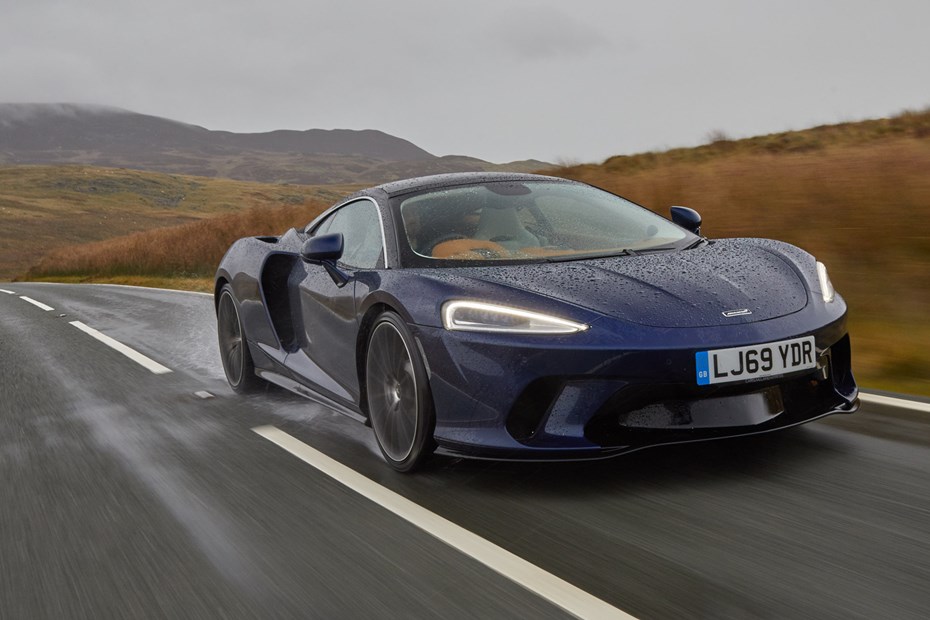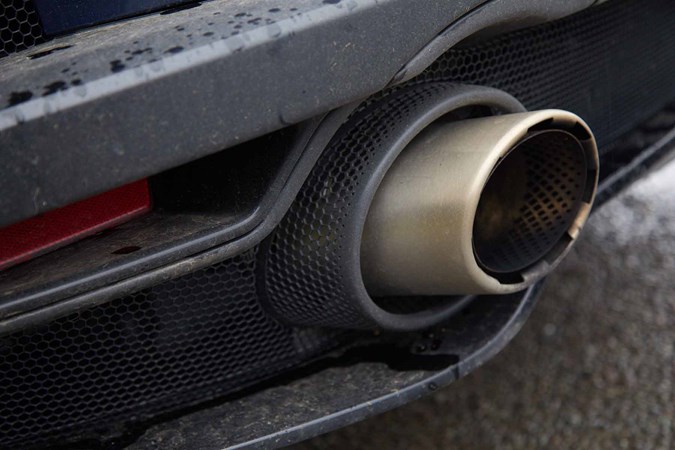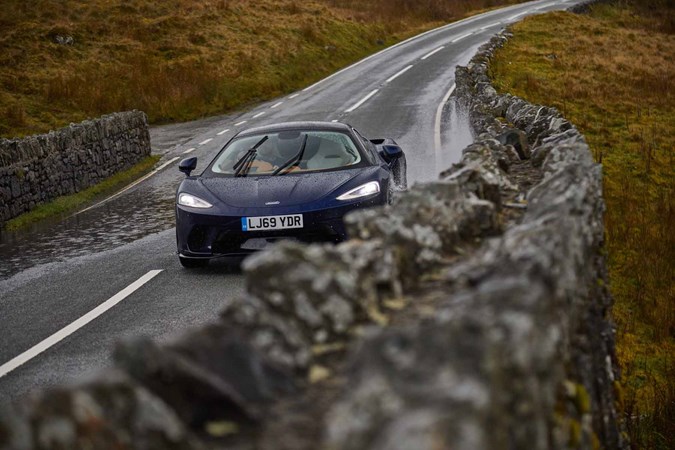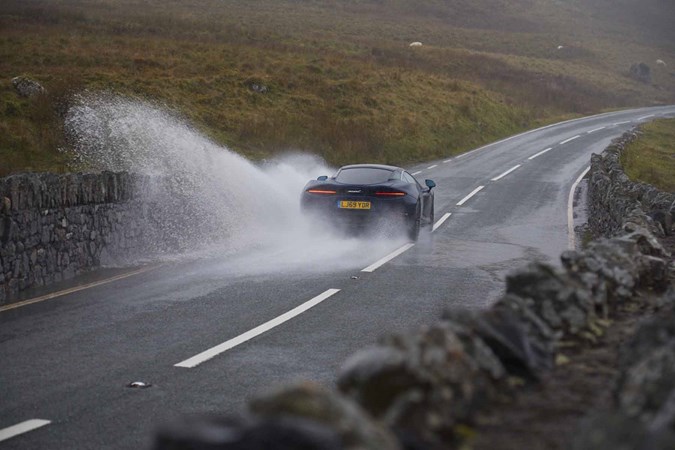McLaren GT Coupe engines, drive and performance

- Larger 4.0-litre V8 than 570S
- Brutal acceleration and strong mid-range
- Gearbox is a proper delight
Whereas other Sports Series (McLaren’s entry-level range) cars use a 3.8-litre twin turbo V8, the GT has a 4.0-litre version, again paired with a seven-speed dual-clutch transmission. It makes 620hp, against 570hp for the 570S, but is tuned more for mid-range torque - 630Nm of it.
That makes the GT feel pleasingly usable in everyday driving – there’s no waiting for the revs to rise all the way for some power to arrive, you just put your foot down and the car responds like a pinged elastic band. It’s a very relaxing way to drive incredibly fast.
As with all McLarens there’s some turbo lag to deal with but the gearbox does a good job of managing this when left in full auto, and responds faster than a hummingbird’s wing when you elect to click one half of the single-piece paddle shifter.

The hard-edged engine noise is nothing like as rich as the noise from an Aston DB11’s V12. It sounds more highly-strung supercar than intercontinental cruiser, and is a bit too present at motorway speeds in terms of noise. Leaving it in comfort mode takes the edge off this a bit.
The flipside of that is it also goes like a supercar. You don’t get the savage top-end kick you get in some other McLarens but this is a hugely quick car: 0-62mph takes 3.2 seconds, compared with 3.9 seconds for the DB11. That means there’s not much in the way of motivation to rev the GT out in every gear – some will lament this, others will not.
Handling
- Leaves lardy GT competition in its wake
- Softer than other McLarens we’ve driven
- That’s a bit like saying steel is softer than titanium, however
Context is everything – driven after a 600LT and the GT will feel soft and too keen to push its nose wide. But drive it after almost any other car, and particularly a big front-engined Aston or Bentley and you’ll be convinced you’re ready for Le Mans glory.
It is without doubt the most focussed and scalpel-sharp GT on sale, meaning it’s an easy choice for someone who enjoys driving but also needs something capable of traveling long distances.
The chassis feels beautifully balanced, the steering, communicative, and the standard steel (rather than carbon brakes) have a softer, more progressive action than other McLarens that makes them better suited to road use.

That said, you still get a brake pedal with a fairly wooden feel unless you’re absolutely standing on it. It’s also set very close to the accelerator like we’ve experienced in the firm’s other cars – ideal for left-foot braking, not so good in traffic. You’d have thought this carry over from the more sporting 570S would have been altered for a car more suited to longer journeys, but there it is.
The steering offers typically linearity and precision, although felt a bit longer geared than in a 570S, meaning you have to turn it more to navigate tighter turns or roundabouts. This in itself is no bad thing, making the car feel more relaxed and less twitchy, especially on the motorway.
While McLaren says the steering has a more refined tune we still felt lumps and bumps kicking the wheel around in our hands –this helps to transmit the topography of the road but is an attribute than can get a little tiring on a long drive.

It’s also a lot more planted than other McLarens we’ve driven, with stacks of grip and a very busy traction control light even in the dry. Standing starts, mid-corner accelerations and even some brisk overtaking manoeuvres can all trigger a speed-sapping flicker of ESP, making it the car feel very user-friendly but also a bit frustrating when you want to push on.
Still, that comprehensive lack of waywardness is probably a good attribute in a car you could conceivably complete a much longer journey in than a 570S. The last thing you need after several hours behind the wheel is an unpredictable rear end just waiting to spit you off the tarmac in response to a momentary lack of concentration.



